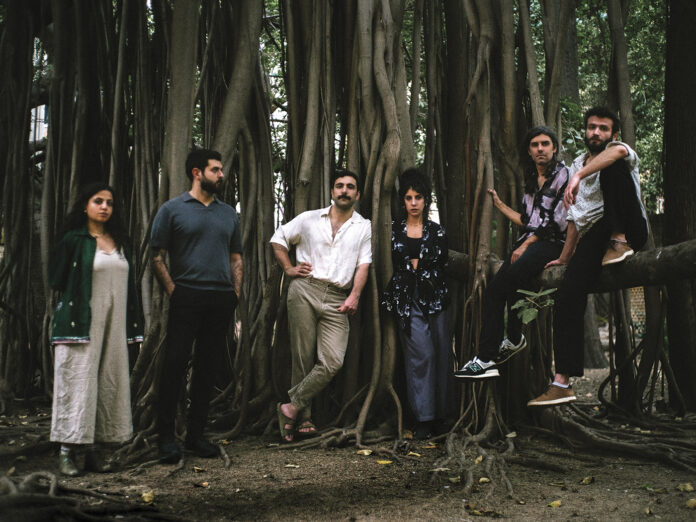Even by Lebanon’s standards, the period from 2019 to 2021 was a turbulent period in the country’s history. In October 2019 protests against political corruption and the government’s poor handling of the stagnating economy erupted across the country. A new government was formed, yet this too crumbled in the wake of the huge explosion that rocked Beirut’s port area in August 2020. Rolling blackouts, shortages of fuel and medicines and general economic woe kept the protests – many of which were driven as much by women as men – continuing well into 2021.
Even by Lebanon’s standards, the period from 2019 to 2021 was a turbulent period in the country’s history. In October 2019 protests against political corruption and the government’s poor handling of the stagnating economy erupted across the country. A new government was formed, yet this too crumbled in the wake of the huge explosion that rocked Beirut’s port area in August 2020. Rolling blackouts, shortages of fuel and medicines and general economic woe kept the protests – many of which were driven as much by women as men – continuing well into 2021.
If the problems are still very much present, the turmoil did have one unexpected result. Previously keeping to their own districts of Beirut, the musicians in the city’s underground rock and experimental scene were sparked into greater collaboration by the collective action of the protest movement. The most prominent group to come from that melting pot so far is Sanam.
Originally coming together to back Faust’s Hans Joachim Irmler at 2021’s Irtijal festival, the six Lebanese musicians stayed together afterwards to create their own group. With their drums, bass, electric guitar and vocals they’re able to harness the power of Western rock music, but their sound is fundamentally experimental – Anthony Sahyoun contributes synths, sometimes used to manipulate his guitar – and also deeply rooted in their homeland: the traditional Levantine instrument the buzuq, is a strong flavour here, played by the master player and musicologist Farah Kaddour.
Their 2023 debut LP, Aykathani Malakon – which translates as An Angel Woke Me – introduced their style, a brutal mix of post-punk, krautrock and Arabic influences. It was recorded in an isolated house in the Lebanese countryside, but the creation of their follow-up was very different: most of the record was tracked at the residential La Frette just outside Paris, favoured studio of Nick Cave and Arctic Monkeys, after stints working on the material in Beirut and the city of Byblos.
Sametou Sawtan, or I Heard A Voice, finds Sanam’s sound evolving, presumably as they become more comfortable as a group. If some of the debut’s experiments could occasionally feel a little rough and ready, Sametou Sawtan is very much the finished product. Its textures range from the hushed and spectral to maximalist gothic cacophony. The closing title track, for instance, one of only two tracks surviving from the Byblos sessions, finds Sandy Chamoun’s magnificent voice meditative and keening over only subtle drones and dusty clatters.
The opener, “Harik”, is the polar opposite, beginning with pounding drums, atonal synth explosions and Chamoun’s guttural shrieks. Farah Kaddour’s lightly distorted buzuq soon raggedly answers Chamoun as the intensity rises. The nine and a half minute “Hamam” is similarly extreme, coming in with a free-form jangle that suggests latter-day Sonic Youth, except with Levantine microtonal tuning; by the halfway point of the track, buzzing, ominous drones threaten to overwhelm Chamoun’s tortured voice, until the final couple of minutes erupt into a metallic climax. “Hadikat Al Ams” is a pulsing, galloping, one-chord piece, at times as punishing as Sanam’s favourites, Swans, until it periodically collapses into free jazz clamour; “Sayl Damei” is post-punk with a distinctly Radiohead-esque sinuosity.
Quieter moments are provided by “Goblin”, much of which is just Chamoun’s voice and Sahyoun’s dusky synth, tuned to the microtonal Arabic scale, and “Habibon”, a smokey crawl, Chamoun’s voice run through Auto-tune that renders her even more melismatic.
Lyrically, aside from two songs written by Chamoun, these pieces span millennia of Arabic folklore, song and poetry: there are Egyptian traditional folk songs, such as “Hamam” (‘Little Dove’), pieces by modern Lebanese poet Paul Chaoul and Palestinian poet Mahmoud Darwish, and a number of thousand-year-old texts by the likes of Omar Khayyam and Ibn Nubata. The latter position Sanam as some kind of folk-rock band; it’s hardly surprising, considering the suffering of the people of the Arab world, that the group are well aware of their history, and using their art to communicate something bigger than themselves.
Fusion of the old and new isn’t rare in the Middle East; yet, in all its fury and sonic exploration, Sametou Sawtan updates traditions in a way that feels true to the spirit of protest that birthed the group, and to the counterculture they exist within. Confrontational, progressive and at times deeply beautiful, Sanam’s music is a thrilling example of the magic that can come from chaos.
When you purchase through links on our site, we may earn an affiliate commission. Here’s how it works.



